

|
 |
Bill (The): Volume Two (TV)
R2 - United Kingdom - Network Review written by and copyright: Paul Lewis (1st March 2009). |
|
The Show
 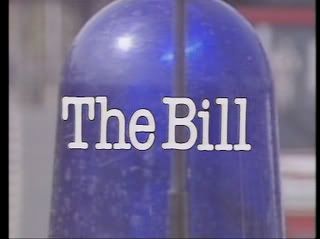 The Bill (Thames, 1984- ), one of British television’s most long-running dramas (and the longest-running police show in British television history), has been through many changes. Produced by Thames Television and broadcast on ITV, The Bill began its life as a gritty, post-watershed hour-long drama. Shot in a vérité-style featuring heavy use of real locations and handheld camerawork, the series was created as a police procedural and provided a seemingly very realistic ‘warts-and-all’ insight into the workings (and internal politics) of the fictional Sun Hill police station. The series was also very socially-minded, tackling issues such as prejudice and class conflict in a way that, like the similar and much-loved Z Cars (BBC, 1962-78) before it, was very rarely precious and preachy: in fact, writing in 1992 Strinati and Wagg described The Bill as ‘a social realist police series […] which echo[es] series in the early 1960s like Z Cars’ (6). 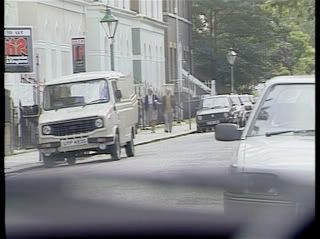 In its original incarnation as a post-watershed hour-long drama, The Bill ran for three series, featuring no more than twelve episodes apiece. In 1988, the format was revamped and some of the cast members changed: the show was reinvented as a thrice-weekly half-hour serial that was (and still is) broadcast before the watershed. Some of the more challenging themes and language were dropped due to the pre-watershed slot (and, in protest, the actor John Salthouse left the production, resulting in the departure of his character DI Galloway); in the ensuing years, the show’s focus gradually shifted from the internal politics of the police station to character-centric drama more befitting of a soap opera. In 2002, former Brookside (Channel 4, 1982-2003) producer Paul Marquess took the reins of the show and pushed the series into the realm of the genre that came to dominate British television drama in the Twenty-First Century, the ‘occupational soap’. In this incarnation, the series featured a heavy emphasis on the personal lives of the characters, with less of a focus on policework; in 2002, Marquess commented that ‘I arrived with a clear brief – to turn The Bill into a serial’ (Marquess, quoted in Bignell, 2004: 262). Marquess also replaced many of the regular cast members with actors who had made their names in soap operas (ibid.). Marquess’ primary aim was to attract more young viewers, with the aim of making The Bill ‘more valuable as a commodity that could be sold to advertisers’: Marquess commented, ‘It still gets 7 million viewers as it is, but if you look at The Bill’s demographic, it is white men over 50’ (Marquess, quoted in ibid.; see also Nelson, 2007: 64). However, with the departure of Marquess as Thames’ Head of Drama and his replacement by Johnathan Young in 2005, The Bill was once again reinvented and the focus of the show shifted away from the characters’ personal lives and back onto the procedural elements of the original series. (The hour-long format has also been reinstated, and currently the series is broadcast on a twice-weekly basis, although still before the watershed.) 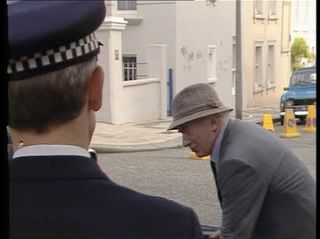 This release from Network is the second volume of the first batch of half-hour serialised episodes from 1988. (The first volume was billed as ‘Series 4, Volume 1’, but the ‘Series 4’ tag seems to have been dropped from this release.) This era of The Bill shows the direction the series took in 1988: much softened in its themes (compared with the first three series of the show), it is still recognisable as a police procedural, with each episode focusing on a different crime. (For example, the first episode in this set, ‘Requiem’, focuses on the discovery of a body that has been sealed in the wall of a house; a later episode, ‘Community Relations’, centres on the police’s perceived prejudicial treatment of London’s black community.) There are some ongoing narratives that build across groups of episodes, but fortunately none of the ongoing relationship-oriented storylines that came to dominate the series in the early 2000s. The departure of DI Galloway is to be mourned, as during the first three series John Salthouse played the character to great effect; but as if to compensate, these early half hour-long episodes brought into play the character of DI Burnside (Christopher Ellison), a tough-talking, rule-bending CID man who, in terms of his characterisation, owed more than a tip of the hat to Jack Regan (John Thaw) in The Sweeney (Thames, 1974-8). Burnside had been introduced as a minor character in the first three series of The Bill, but with the episodes produced in 1988 his character took on a more prominent role. The Bill has been seen as a synthesis of both the representation of the uniformed community policeman as a friendly, paternal figure (as per Dixon of Dock Green, BBC 1955-76) and the depiction of non-uniformed police as struggling to violently negotiate the fine line between law and disorder (as per The Sweeney). From its outset, the series depicted the uniformed ‘bobbies’ as in conflict with the CID department, who due to their need to gather more convictions are sometimes seen by the uniformed bobbies as glory-hunters: Alan Clarke (1992) asserts that The Bill ‘places in conflict ‘the uniformed officers who follow the book and the CID officers who need the convictions’ (Clarke, 1992: 250). In an influential 1994 study of the representation of policing on television (‘The dialectics of Dixon: the changing image of the TV Cop’), Reiner established a dialectical relationship between Dixon of Dock Green and The Sweeney, and claimed that The Bill ‘established a state of equilibrium’ through its internal juxtaposition of the lives of the uniformed police with the experiences of the CID officers: the series ‘achieved a balance between care and control, and between bobby and detective’ (Reiner, cited in Leishman & Mason, 2001: 101). As a consequence, for Reiner The Bill fuses Dixon of Dock Green’s representation of policing as a form of pastoral care with The Sweeney’s emphasis on policing as social control, ‘suggest[ing] that care and control are interdependent, reinforcing each other’ (Reiner, quoted in ibid.: 54). These two elements of The Bill are embodied in the characters of Sergeant Bob Cryer (Eric Richard)—the paternal, disciplined and ‘firm but fair’ head of the uniformed officers—and DI Burnside, the renegade CID man who is willing to bend the rules. 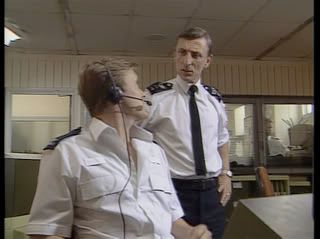 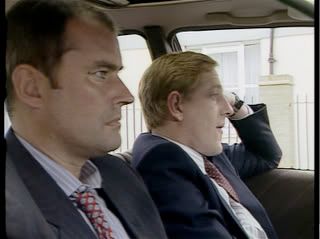 Another key element of The Bill’s approach, especially during the 1980s and into the early 1990s, is its pseudo-documentary style (see Leishman & Mason, op cit.: 63). In State of Play: Contemporary High-End TV Drama (2007), Robin Nelson discusses The Bill in comparison with similar American crime shows, suggesting that whereas US television tends to be ‘glossy and brightly lit with a filmic look, featuring conventionally attractive performers […] located in spacious, clean, well-furnished environments’, British television dramas are ‘dark and gritty: with a grainy documentary or inexpensive studio look’ (133; emphasis in original). Where US shows are ‘action-led and fast-paced’, comparative British series tend to be ‘character-based and slower-paced: foregrounding dialogue which, at best, obliquely reveals character complexity and, at worst, overtly signals character inter-relationships’ (ibid.; emphasis in original). Finally, where US television drama aspires to be mostly ‘entertainment-oriented: up-beat, feel good and lifestyle-centred’, British dramas are ‘imbued with a public service ethos: downbeat, reflective and engaged with social issues’ (ibid.; emphasis in original). Nelson identifies The Bill as, within the format of the police drama, a series which exemplifies the defining characteristics of British television drama; as a contrast, he cites NYPD Blue (Fox, 1993-2005) as a comparative American series which emblematises US television drama’s status as entertainment-oriented, action-led and fast-paced and, to a certain extent, ‘glossy’ and filmic (ibid.). NYPD Blue strove to achieve a similar documentary style, but despite its strengths it still succumbed to the casting of attractive leads and, although the series could be morally challenging, it tended to be focused on action and the narratives progressed at a fast pace. Ironically, in recent years (notably during Paul Marquess’ run as executive producer) The Bill has begun to adopt more and more of the trends of US television, casting attractive young soap opera stars and placing a heavier emphasis on action. By contrast, the acclaimed HBO series The Wire (2002-8) adopted many of the conventions of British television drama, with its focus on character and its relatively slow pace (not to mention the abandonment of the conventional and binding ‘three act structure’, which still dominates American screenwriting—arguably to its detriment); The Wire also has something of the public service ethos that characterised earlier British crime shows such as Z Cars and the first few years of The Bill. (Perhaps it should also be noted that The Bill made heavy use of the ‘walk and talk’ trope that has recently been popularised by the US series The West Wing, Fox 1999-2006.) 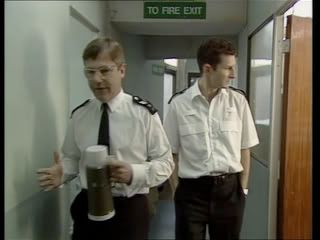 The episodes on this DVD set don’t represent the best of The Bill (arguably, first three series represent the peak of the show’s long history), but they are representative of the strongest era of the series since its move into the serialised half hour format; it was during this era that The Bill tried to appeal to a family audience without sacrificing its defining procedural elements. (When the show did begin to sacrifice its procedural elements in 2002, it tellingly alienated much of its core audience; this might explain the return to the more traditional procedural format in 2005.) Episode breakdown - Disc One: 1. 'Requiem' 2. 'Trespasses' 3. 'Save the Last Dance for Me' 4. 'Runaround' 5. 'The Trap 6. 'Community Relations' Disc Two: 7. 'A Dog's Life' 8. 'Trouble & Strife' 9. 'Running Late' 10. 'They Say We're Rough' 11. 'Blue for a Boy' 12. 'Chasing the Dragon' 13. 'The Coop'
Video
The Bill is presented in its original broadcast screen ratio of 1.33:1. After 1988, the series was shot wholly on videotape with lots of location work, and considering this the episodes presented on this disc look surprisingly good; the presentation of the post-1988 episodes is much stronger than the presentation of the first three series on their DVD releases (also available from Network), and this is probably down to advancements in VT technology during the 1980s. 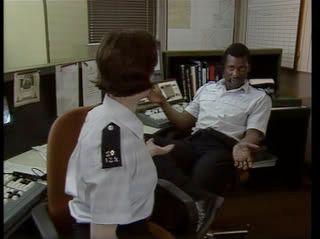
Colours are vibrant and the VT aesthetic enhances the documentary-style of the programme. (VT is the new black-and-white, one could argue: whereas for audiences through to the 1980s might associate the monochrome aesthetic with newsreel footage, VT-shot footage is arguably now indexical of television news broadcasts.) The original break bumpers are intact.
Audio
The series is presented via a two-channel stereo track. This is clear and without problems. There are no subtitles.
Extras
There is no contextual material. Interviews with the cast and crew would have helped contextualise the series somewhat, pointing out the ways that it has changed over time.
Overall
The Bill is a fine series. On a subjective level, I’m less fond of these half hour pre-watershed episodes than I am of the hour long post-watershed stories from the first three series, due to the ways in which these later shows feel somewhat ‘watered down’ and lack the breathing room that the hour-long format provides; dealing with narratives in the space of half an hour means that aspects of the procedural element of the drama are ‘glossed over’ and underdeveloped, and it feels as if the writers are struggling to cram in both the investigation elements of the stories and the banter between characters that traditionally makes procedural dramas so engaging. (On reflection, this may have been the reason for the series push into the realm of the occupational soap in the late 1990s and 2000s, and may have factored into the decision to reintroduce hour long shows during the mid-2000s.) However, in this incarnation the series is still socially-aware and deals with some pertinent social issues (for example, power and prejudice) in a way that, as noted above, is never preachy or precious. The characters are engaging and, as befits classic British television drama, the series never becomes too glossy—although this happened later in the series’ history. There is some great location work, and these episodes still feel very contemporary. 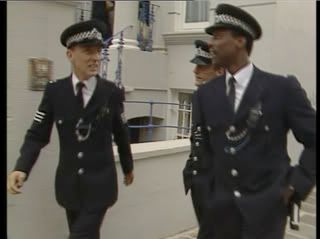
As an aside, in 2007 a fascinating radio documentary about the evolution of The Bill was produced for Australia’s Radio National series Radio Eye; the full programme is available for download at the Radio Eye website. References: Bignell, Jonathan, 2004: An Introduction to Television Studies. London: Routledge Clarke, Alan, 1992: ‘“You’re nicked!”: Television police series and the fictional representation of law and order’. In: Strinati, Dominic & Wagg, Stephen, 1992: Come on Down?: Popular Media Culture in Post-War Britain. London: Taylor & Francis: 232-53 Johnson, Catherine & Turnock, Robert, 2005: ITV Cultures: Independent Television Over Fifty Years. London: McGraw-Hill Jury, Louise, 2002: ‘Drama behind the scenes at “The Bill”’. The Independent on Sunday (22 June 2002). [Available online.] http://www.independent.co.uk/news/media/drama-behind-the-scenes-at-the-bill-646043.html Kibble-White, Jack, 2002: ‘And the beat goes on…’. OffTheTelly. [Online.] http://www.offthetelly.co.uk/drama/cops.htm Leishman, Frank & Mason, Paul, 2001: Policing and the Media: Facts, Fictions and Factions. London: Willan Publishing Nelson, Robin, 2007: State of Play: Contemporary High-End TV Drama. Manchester University Press Newsome, Brad, 2007: 'On trial, or who killed the old Bill?' The Age [Available Online.] http://www.theage.com.au/news/tv--radio/on-trial-or-who-killed-the-old-bill/2007/01/24/1169518718394.html?page=fullpage Strinati, Dominic & Wagg, Stephen, 1992: ‘Introduction: Come on Down? – popular culture today’. In: Strinati, Dominic & Wagg, Stephen, 1992: Come on Down?: Popular Media Culture in Post-War Britain. London: Taylor & Francis: 1-8 Mawby, Rob C., 2007: ‘Criminal Investigation and the Media’. In: Newburn, Tim et al, 2007 (eds): Handbook of Criminal Investigation. London: Willan Publishing: 146-69 For more information, please visit the homepage of Network DVD.
|
|||||

|